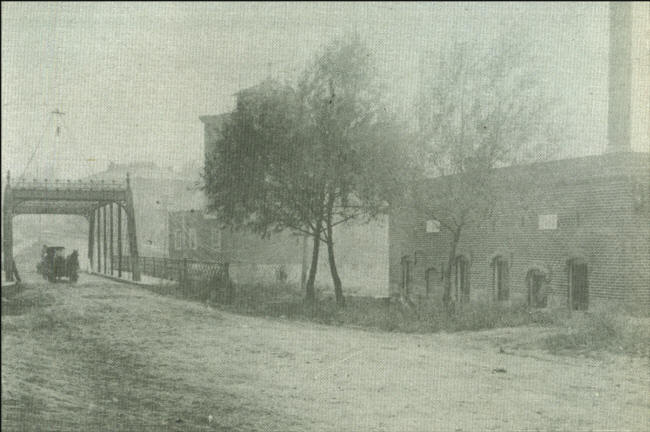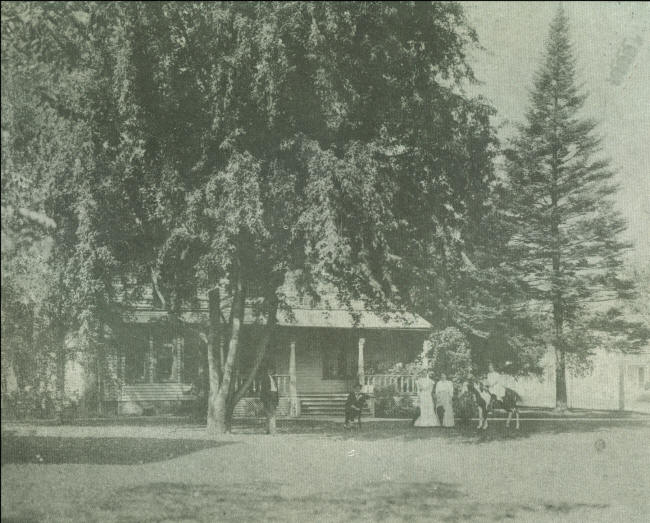|
|
|
Clark County Press, Neillsville, WI July 13, 1994, Page 28 Transcribed by Dolores (Mohr) Kenyon. Index of "Good Old Days" Articles
|
|
|
|
Clark County Press, Neillsville, WI July 13, 1994, Page 28 Transcribed by Dolores (Mohr) Kenyon. Index of "Good Old Days" Articles
|
Good Old Days
News of July 1900 in Clark County
By Dee Zimmerman
Clark County hosted a large gathering for the State Republican Convention held in early July of 1900. There were 83 delegates, numerous candidates and their attendants. Many gathered at Loyal on the first evening, where those residents went all out in trimming and decorating the convention hall with a large banner, bearing the word “Welcome.”
L. M. Sturdevant, a Neillsville resident, presided over the convention, stating a three-fold object of the meeting: elect seven delegates to the Republican Congressional convention; to elect thirteen delegates to the state convention and place in nomination an assemblyman and a full county ticket. On a motion Geo. E. Crothers was elected temporary chairman of the convention and P. E. Peterson of Greenwood was temporary secretary.
Delegates appointed to the State convention were: F. T. Tucker, C. F. Ellingson, C. H. Ebbe, D. R. Freeman, Orlo (Arlo) Huckstead, Geo. E. Crothers, W. C. Brooks, P. E. Peterson, J. E. Lyons, Elmer Brown, Andrew Emerson, Greg Manes, Geo. Brooks; to the Congressional convention, Geo. B. Parkhill, I. C. Gotchy, C. G. Stow, Ira Fike, James Campbell, Paul Rossman, and Ed Kayhart.
A notice was printed that week, asking for 10 teams of horses and several men to work on the railroad eight miles northeast of Greenwood in the Town of Beaver. G. M. Willis was the engineer in charge and he also wanted some men to take contracts on station work.
The 1900 census showed a 33 percent increase in the number of residents for townships of Beaver and Unity, over the previous census. Big celebrations were held throughout the county in celebration of the nation’s great anniversary day, July 4th.
The Furniture Factory, leased by the Wisconsin Furniture Co., was supervised by Morrison. The first floor of the factory was turning out material for sideboards and washstands at a rapid rate. The lumber was sent through the various machines planed, trimmed, then through whirling, carving machines – sand papered and ready for varnishing or painting. The items were sent to the painting rooms, adding the finishing touches to complete the product.
Clark County lands were up for sale, the cut-over lands sold by lumber companies. James L. Gates of Milwaukee purchased 100,000 acres from nine different lumber concerns in 1898. Of that acreage, 20,000 acres were sold to 200 settlers in 1898. The average price was $6.25 an acre. In 1899, Gates purchased 160,000 acres from fifteen other lumber companies. Of this tract 52,000 acres were sold for $400,000 to 400 actual settlers at prices ranging up to $7.50 an acre. Prior to those purchases he had acquired 350,000 acres in other sections of central Wisconsin. In six Clark county town-ships and one Eau Claire County township, there was one tract of 158,000 acres owned by one person which was thrown open for settlement in 1900. “From all of that land, the hardwood timber had been cut off, leaving a clay, loamy, virgin soil, enriched by forest mold of centuries,” as was quoted in the N. W. Land Guide.
•••••••••
Happiness is activity—Aristotle
••••••••••
 |
When life went at a slower pace… a horse and carriage, followed by a lumber wagon, makes their way over the wooden platform of O’Neill Street Bridge, onto the earthen road ahead. In the distance, behind the bridge view, is the Merchants Hotel. Between the bridge and trees, stands the old Grist Mill that was located on the south bank of O’Neill Creek, one of Neillsville’s first businesses. The brick building on the right is that of the city’s first electric light plant.
 |
A moment of leisure… this scene was captured at the turn of the century on the front lawn of a Neillsville home located in the 400 block of West Fifth Street. Shown in the photo left to right; Jeff Schuster, Henry Peters, Edith Schuster, Gertrude (Schuster) Peters, and Jean Peters with her pony. The house still remains on that lot and in later years was referred to as the “Kleckner house.” (Jeff Schuster donated land to the city, designating that it was to be used as a park, and it is known to us today as “Schuster Park.”)
|
© Every submission is protected by the Digital Millennium Copyright Act of 1998.
Show your appreciation of this freely provided information by not copying it to any other site without our permission.
Become a Clark County History Buff
|
|
A site created and
maintained by the Clark County History Buffs
Webmasters: Leon Konieczny, Tanya Paschke, Janet & Stan Schwarze, James W. Sternitzky,
|